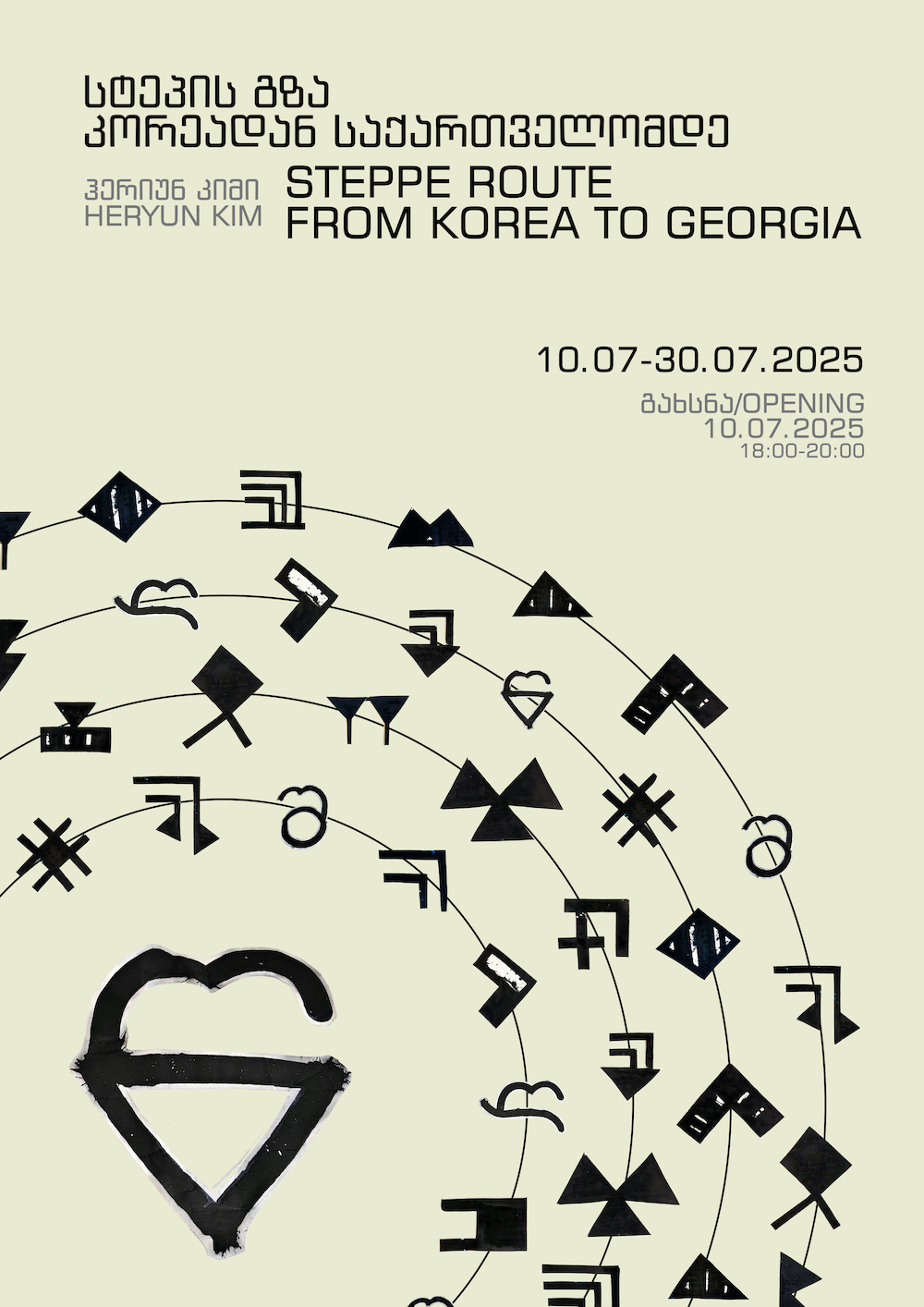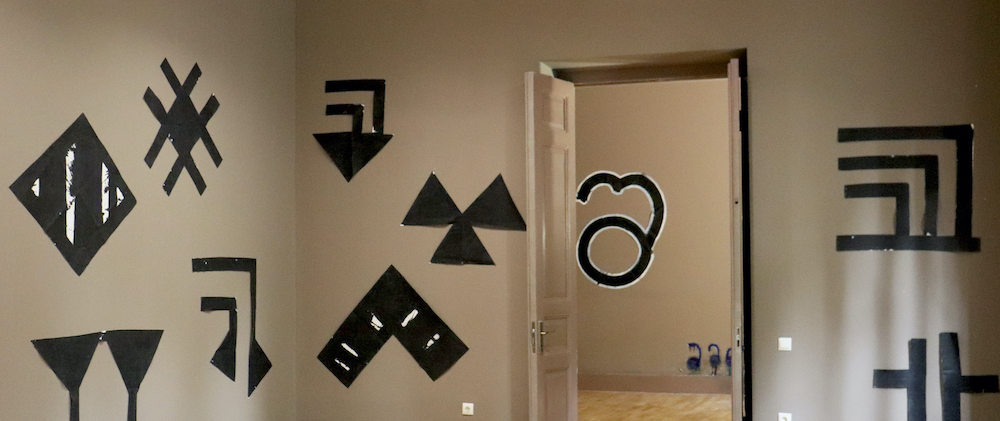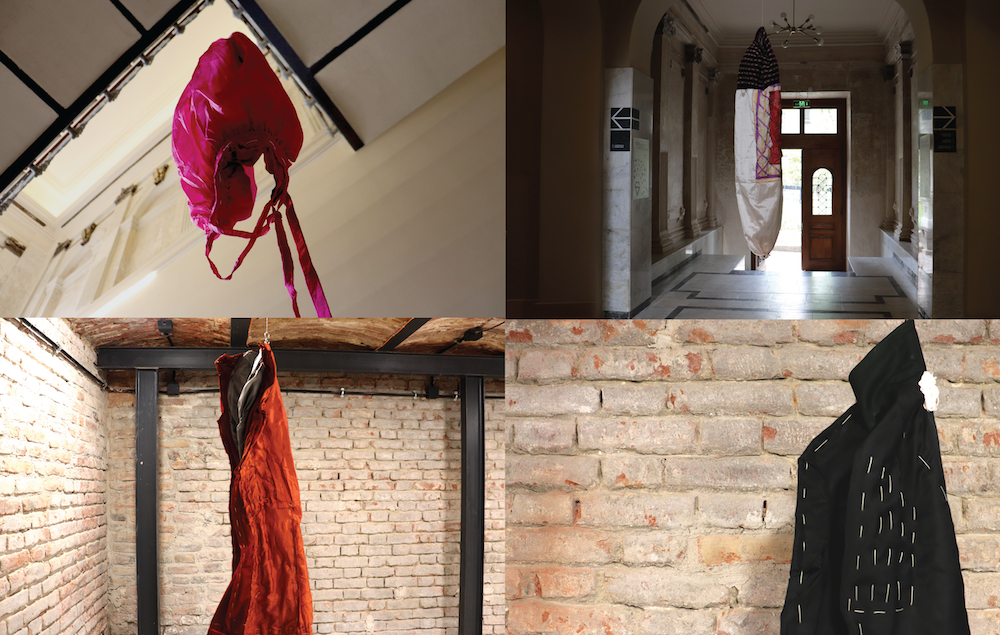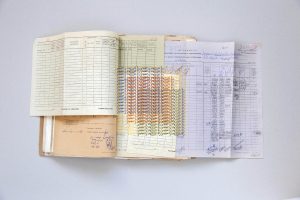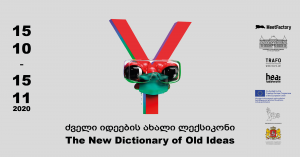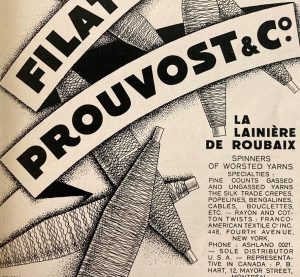The exhibition Steppe Route: From Korea to Georgia by artist Heryun Kim, presented in the spaces of the State Silk Museum, offered dynamic works that reflect on timeless ancient knowledge. The artist’s research on the prehistoric world and early civilizations unfolded through a creative approach across multiple media (inked painting canvas, textile objects) and transformed into a site-specific installation within the museum’s exhibition halls.
Historically, the “Steppe Route” is an older trade route than the Silk Road, functioning from as early as 2000 BCE, during the Bronze Age. Among nomadic tribes, it served as a network of exchange, connection, and communication, stretching across the Eurasian steppe zone. This ancient transcontinental route, which linked early civilizations, also significantly influenced the cultures that developed in the territory of present-day Georgia (e.g., the Trialeti culture). Georgia served as one of the natural bridges between the nomadic steppe world of the North and the developed civilizations of the South. Notably, some scholars propose that the diffusion of Indo-European languages may have followed the path of the Steppe Route. According to this theory, the Caucasus region functioned as a zone of linguistic diffusion, where Proto-Indo-European, Caucasian, and Semitic languages converged.
Archaeologist and Eurasian studies scholar Philip Kohl refers to the Caucasus as a cultural corridor connecting the Eurasian steppe and the Mesopotamian–Near Eastern world.
How can such historical knowledge and theoretical assumptions evolve when approached from an artistic perspective? The exhibition by Heryun Kim—an artist active between two distinct cultural contexts, South Korea and Germany—offers a multilayered response to this question. The artist’s three-part installation is inspired by ancient forms of writing. Rather than presenting a chronological historical narrative, it proposes a visual journey through Sumerian (the oldest), Runic (Old Germanic), and Georgian scripts, based on cultural–archetypal artistic interpretation. The diffusion, distinctions, and semiotic-linguistic differences between these geographically distant cultures become an emotional journey from one space to another. Each pictogram or alphabetic character is a symbolic reference—a call to grasp the shared wisdom of humanity, forming a unified artistic universalism. Writing, one of humanity’s most essential inventions and the highest expression of thought, through Kim’s installation becomes an act of self-reflection and a way to connect with the surrounding world—an invitation to engage with fundamental states of awareness.
Is this state of analysis not also a reflection of humanity’s timeless aspiration—to transcend borders, to communicate, to understand? This desire is what situated art and creative expression within the spiritual dimension of humanity. Heryun Kim’s script-inspired installation becomes a “Steppe” itself, suspended beyond time, where new forms and horizons emerge.

Cosmogony of a silent hole
Thousands cracks in a timeless shores
Stepping to Steppe
Mother of Land
ENHEDUANNA – CROSS IT AGAIN …
Haiku dedicated to Cutting Letters by Mariam Shergelashvili
Alongside this installation, the exhibition also presented works from the artist’s second long-term series, “Mother Mobile”, in which traditional Korean costumes (Hanbok) are transformed into universal forms. Through textile objects, the artist articulates the eternal flow of life, the profound trace of the feminine, and the evolving role of women. The three-dimensional sculptural nature of Kim’s textile works disregards the primary function of clothing—to cover the body. These objects instead generate an autonomous, mobile dynamic. Their sense of movement and monumentality offers a spiritual dimension to the viewer, evoking the metaphorical potential of fabric.
Through such universal coded forms, Heryun Kim—via her conceptual vision—invited us to reflect on the shared mystery of the world, while also reawakening the long-forgotten voices of the steppe that stretch from Korea to Georgia.
Text by Mariam Shergelashvili, State Silk Museum Exhibition Curator
